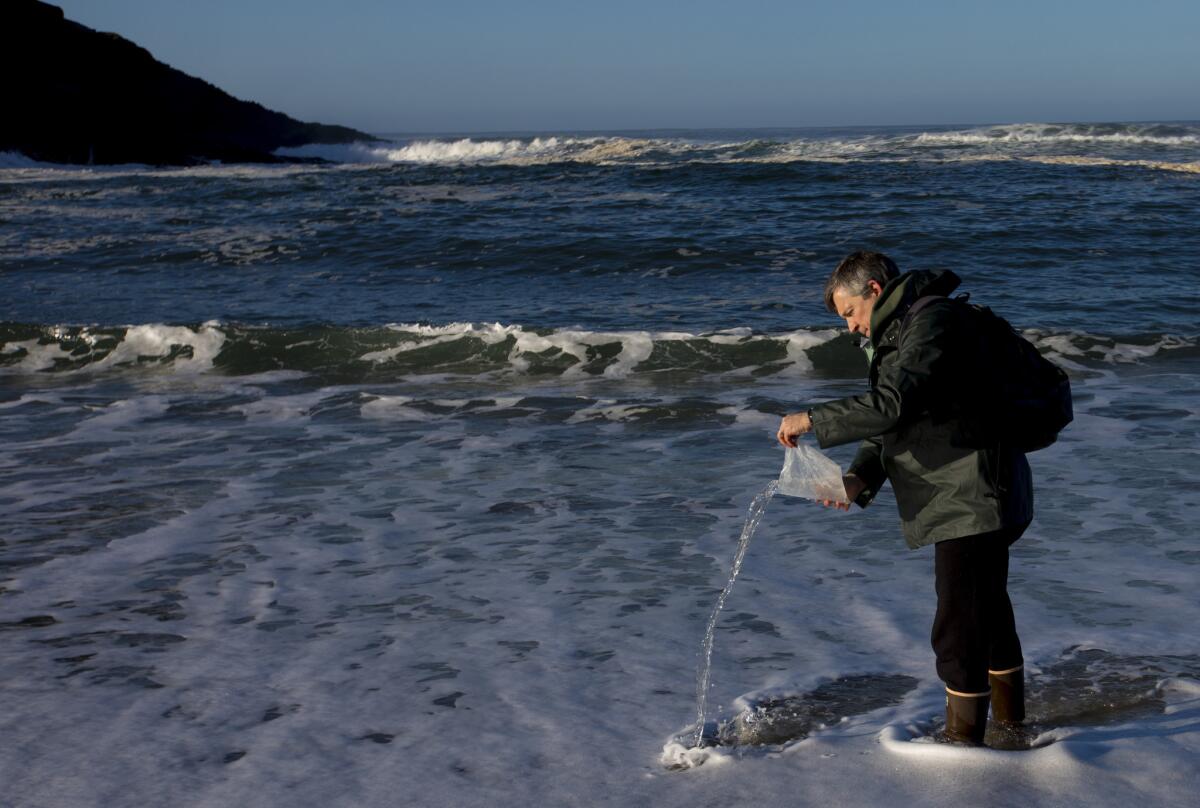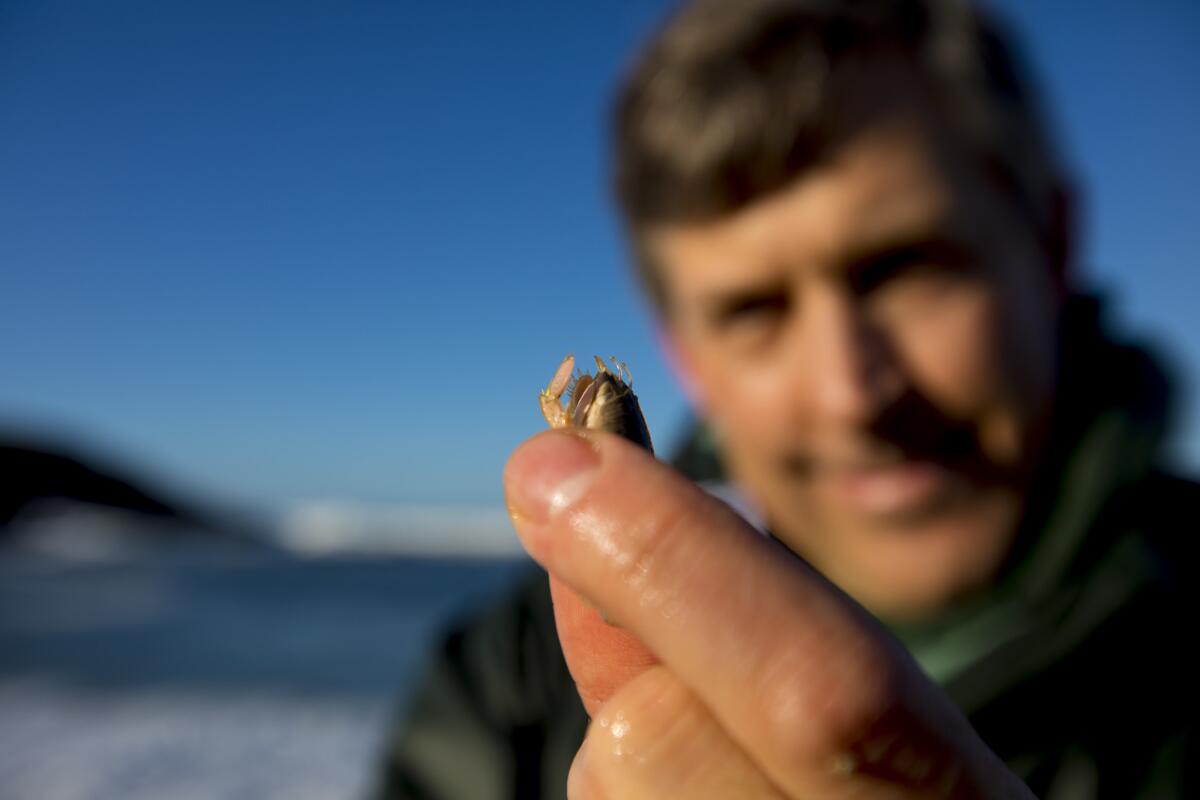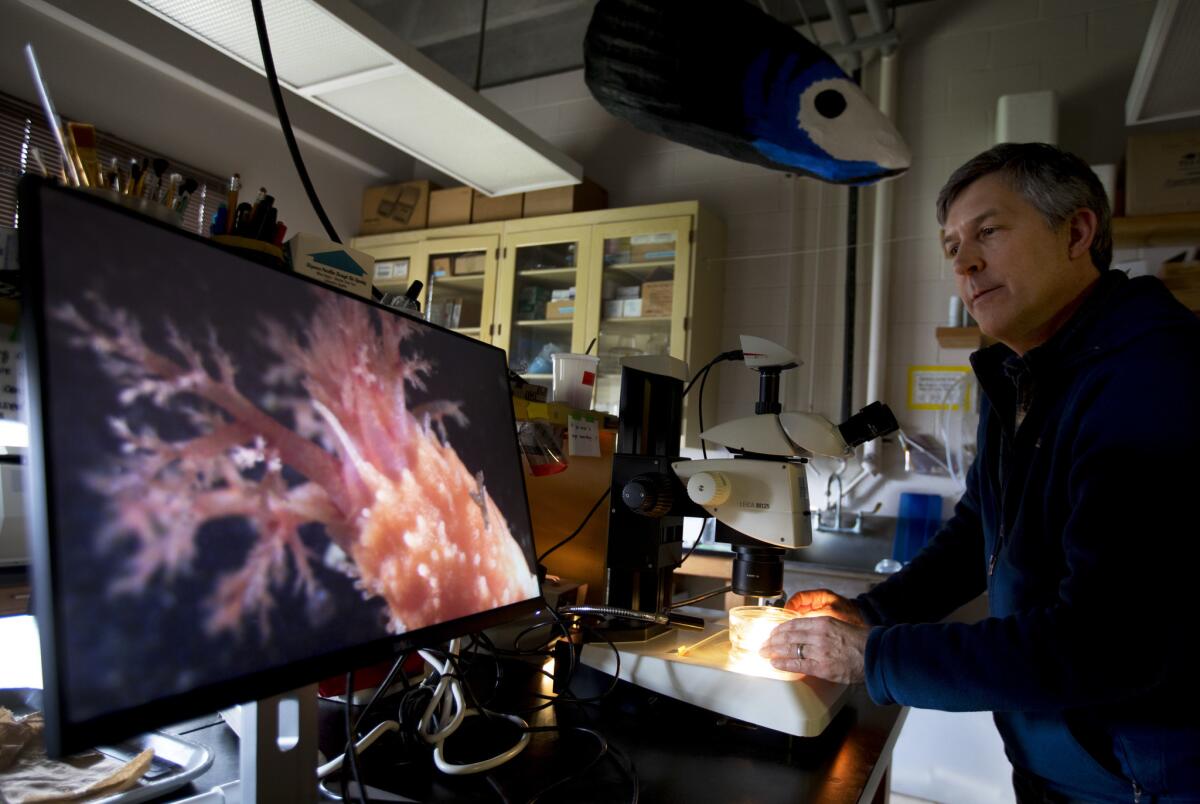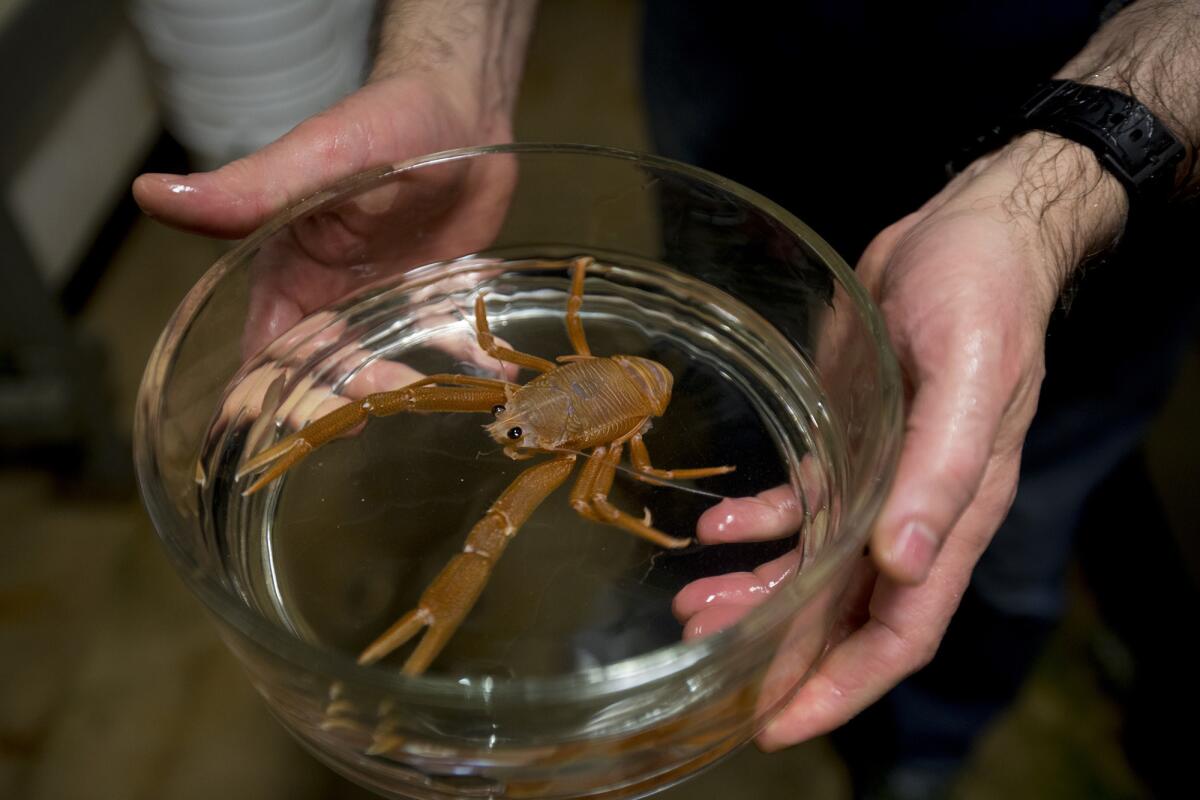Tropical jellyfish, eels and sea butterflies are pouring into California’s coast, thanks to a ‘warm-water blob’

Warm water drew mass migration of marine species to California’s northern coast
- Share via
Reporting from Bodega Bay, Calif. — Marine biologist Jacqueline Sones was strolling along a beach near this Northern California fishing village one foggy summer morning when she spotted an unfamiliar jellyfish bobbing in the surf.
Her curiosity turned to shock, however, when she opened a field guide and identified the creature with a white bowl-shaped bell, vivid stripes and long tentacles.
“I’d discovered something unprecedented,” Sones recalled Monday. “It was a purple-striped jellyfish.”
While the impressively hued Chrysaora colorata is no stranger to Southern California, or Monterey Bay for that matter, it had never been recorded venturing this far north, according to the researcher.
And that translucent visitor was just the first of dozens of nonnative species that started popping up here between 2014 and 2016, when an unusually intense and lengthy marine heat wave hugged California’s coast. Other marine immigrants included snails, dolphins, birds, crabs, fish, sea turtles and multi-colored slugs that typically inhabited warmer waters off the Baja California Peninsula.
Sones, a research coordinator at UC Davis Bodega Marine Laboratory, and Eric Sanford, a professor of evolution and ecology at the lab, documented a total of 67 rare warm-water species.
Of those, 37 had never been documented this far north. Among those species never before seen here were Venus’ girdle ctenophores, or comb jellies; striated sea butterflies; rabbit dorid nudibranchs; pink-striped barnacles; scarlet sea cucumbers; pacific sea eels; bottlenose dolphins and spiny lobsters.

In a study published Tuesday in the journal Scientific Reports, researchers at UC Davis, the Farallon Institute and the Marine Science Institute at UC Santa Barbara suggest that the migrant species were drawn north by rising sea surface temperatures and changing currents during the marine heat wave — also known as the warm-water blob. The authors’ findings may provide a glimpse into California’s aquatic future and the ecological disruptions researchers say a warming climate is likely to bring.
Normally, the California coastline in summertime is characterized by winds that blow from the north, and these winds keep the entire West Coast cool, and ocean currents flowing southward, said John Largier, a professor of oceanography at UC Davis and member of the research team.
“However, when those winds weaken, or change direction, as they did during the marine heat wave, surface currents reverse direction,” Largier said. “So, marine life from southern waters moved north for two main reasons: It was warm and they were transported here.”
The researchers conducted coastal biological surveys from Point Reyes in Marin County to Point Arena and also consulted historical records of species’ northern range boundaries, searched museum collections, and monitored marine conditions above and beneath the waves.
The biggest impacts were seen in areas off Point Conception and Monterey Bay — vast underwater transition zones of deep canyons and climbing foothills. These regions are commonly swept by chilly south-flowing currents that block warmer southern waters.

“During a marine heat wave, it is a bit like temporarily opening a door between lower latitudes and the northern coast,” Sanford said. “The longer the door is held open, the greater the number of southern species that will step through.”
The marine heat wave — which was accompanied by El Niño conditions — was the longest ever recorded off the coast of California, according to researchers.
When oceanic conditions finally returned to normal in late 2016, the influx of new species ended abruptly, the study said.
However, the biological diversity of some coastal communities may never be the same.
For example, a few tropical species including red-striped barnacles, and glass-spined brittle stars, which normally breed off Baja, established local colonies by attaching themselves to pebbles, crevices and the swaying fronds of kelp.
In addition, some rarely seen local species such as owl limpets and volcano barnacles experienced population explosions during the marine heat wave.
“Some people will see the species expanding northward as invaders,” Sanford said. “They’ll say, ‘They don’t belong here.’”
Sanford said he doesn’t share that view, however. “That’s because these species are native to the coastline. And with global warming, the only way these species will persist is to migrate forward.”

Some tropical specimens including chocolate porcelain crabs, scarlet sea cucumbers and red-striped barnacles are now carefully monitored tenants in UC Davis aquariums.
Recently, Sanford placed a glass tray under a microscope. Using forceps, he gently tugged a red-striped barnacle with feather-like legs into view.
“We still have a lot to learn about what is behind the mechanisms that moved creatures like these farther north,” he said. “And their long-term impact here is an open question.”
Smaller surges of species from the Baja California coast have also been documented in Southern California in recent years.
In Los Angeles and Orange counties, for example, blue-footed boobies, green sea turtles and venomous yellow-bellied sea snakes are now pursuing food sources including small fish and eels into warmer water that extends farther north than it has in the past.
“There’s a lot of good evidence that extreme heat-wave events are increasing in frequency and intensity,” Sanford said, “and over time will become more common and longer lasting.”
Sanford said that because of this, once creatures make it up to waters off the California coast, “there’s more of a chance they will survive.”
After documenting the effects of the warm-water blob, Sones and Sanford have now made a morning habit of walking along the nearby Bodega Marine Reserve’s rocky seashore, and looking more keenly than ever at its expanse of tide pools, sandy coves, cliffs and pounding surf.
“We haven’t seen a warm-water creature show up in the past year,” Sones said, her eyes fixed on the surf line. “But we’re looking for them all the time.”

More to Read
Sign up for Essential California
The most important California stories and recommendations in your inbox every morning.
You may occasionally receive promotional content from the Los Angeles Times.











